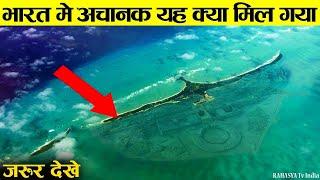10 Most Surprising Underwater Discoveries
Description
10 Most Surprising Underwater Discoveries Caught On Camera
If you're new, Subscribe! → http://goo.gl/djmfuX
For copyright queries or general inquiries please get in touch: [email protected]
Sources: https://pastebin.com/EdnJdhmX
Top 5 Best is the #1 place for all your heart warming stories about amazing people that will inspire you everyday. Make sure to subscribe and never miss a single video!
#viralstory #amazingpeople #top5best
10 most surprising underwater discoveries caught on camera
The ocean. It never fails to surprise us. That shouldn’t come as a surprise as only 5 percent of the world’s
oceans have been explored. Thus every new discovery surprises, and even baffles us. Especially number
one so stay tuned for that. Here are 10 of the most surprising underwater discoveries caught on camera.
Number 10. The Yonaguni Monument
https://www.youtube.com/watch?v=jYBJnX9AHOg&t=59s
The Yonaguni Monument, located just off the coast of Ryuku Islands, Japan, Is a massive underwater
rock formation that is speculated to have existed for more than 10,000 years, but whether the
formation is completely man-made, entirely natural, or has been altered by human hands is still up for
debate.
The monument was first discovered in 1986 by a diver searching for a good spot to observe
hammerhead sharks. After its discovery, Masaaki Kimura, a marine geologist at the University of the
Ryukyu, explored the monument for nearly two decades. Kimura remains convinced that the site was
carved thousands of years ago, when the land mass was above water. According to Kimura the
Yonaguni’s numerous right angles, strategically placed holes and aesthetic triangles are signs of human
alteration. He also claims that carvings exist on the monuments, resembling Kaida script. He believes
that a pyramid, castles, roads, monuments and a stadium can be identified within the structure – which
for him is evidence that the monument is what remains of the Lost Continent of Mu, the Japanese
equivalent to Atlantis.
Number 9. The Underwater City of Shi Cheng
https://www.youtube.com/watch?v=c5arb4vzSIc
Shi Cheng is an ancient Chinese city that was established around 1300 years ago. Also known as The Lion
City, it was built at the foot of Wu Shi Mountain in Zhejiang, China. The Lion City was built during the
Eastern Han Dynasty and was first set up as a county in 208 AD. It was once the center of politics and
economics in the eastern province of Zhejiang.
Today it lies under 130 feet of water, but how did it get there?
Well, that’s not much of a mystery, as the city and the valley were deliberately flooded in 1959 in order
to create an artificial lake and hydroelectric power station. The discovery of the city isn’t at all that
surprising as well, as everyone knows it’s down there. For decades people rarely thought about the
submerged city until 53 years later. When someone thought of diving down to the city to see how it’s
doing, he was pleasantly surprised that the entire city remains intact. The entire city complete with
temples, memorial arches, paved roads, and houses, had become a ‘time capsule’ as almost every
structure was completely intact, including wooden beams and stairs.
It is now a favorite destination of divers.
Number 8. The Underwater River
https://www.youtube.com/watch?v=iHBvKDOfWiI
There’s an underwater river flowing under the ocean in Mexico, and you’ve got to see it to believe it.
Located just 15 minutes away from Tulum on the Yucatan Peninsula, this submerged natural wonder will
blow your mind.
Approximately 180 feet below the ocean surface, this freshwater river is separated from the saltwater
above by a layer of hydrogen sulfate. Because of the limited visibility during the descent through this
hydrogen sulfate cloud, only advanced SCUBA divers are allowed to make this dive.
The cloudy layer is termed a “halocline,” an area where freshwater and saltwater meet. The haze is a
due to the sharp contrast in salinity. Once through the fog, fallen trees and leaves can be seen on either
side of the river.
This is just one of many cenotes, or natural sinkholes, that formed as a result of groundwater being
exposed by collapsing limestone bedrock nearly 6,500 years ago. Cenotes are especially common in the
Yucatan Peninsula of Mexico, and because of their mystic and unique qualities were once used by the
Maya for sacrificial offerings.
Number 7. The Lost City of Heracleion
https://www.youtube.com/watch?v=Nj-TIJJXvr4
Many thought that this city was just a legend, until its surprising discovery under the sea. After searching
for years by screening the vast area of the Abu Qir Bay off the coast of Egypt, French archaeologist
Franck Goddio and his team saw a colossal face emerge from the watery shadows. Goddio had finally
encountered Thonis-Heracleion, completely submerged 6.5 kilometres off Alexandria’s coast.





















Comments